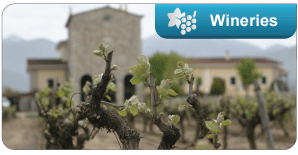Independent Greece
The 1821 Greek War of Independence, which with intervals went on for about six years and left much of the resources of the country in tatters, was inevitably disastrous for the Greek vineyard. The former Ottoman rulers would destroy anything that belonged to their Greek foe, vineyards included, and the Greek rebels would abandon their pruning shears, harvests, and winemaking to take arms. During the early days of independent Greece, the first attempts at resuming winegrowing and winemaking made their appearance, together with the first Greek oenologists. Those attempts were nevertheless doomed to failure as for the next century the Greeks continued their struggle to liberate all of Greece. Yet, even then, wine commerce and the Santorini wine exports went on.
A few decades after the establishment of independent Greece, after the middle of the 19th century, the first large wineries were established. Those were owned by or were established in participation with Europeans (the Bavarian Gustav Clauss in Achaia, the British Ernest Toole in Cephalonia) and, in essence, marked the advent of contemporary Greek winemaking. Those first, large wineries had direct access to European ports. In their footsteps, there followed other large wineries in Attiki (Attica), like Cambas, and smaller ones in Nemea, on Samos, at Naoussa, and on Santorini which still led Greek exports, with Russia as its main market. At the same time, the first Greek oenologists returned to Greece after having completed their oenology studies in France. Greece continued to widen its borders by the annexation of the Ionian islands and Thessalia (Thessaly) to its territory, thus acquiring a size half of what it is today.
With independent Greece well-established towards the late 19th century, the blight of phylloxera practically wiped out the entire French vineyard, resulting in a surge in demand for the Greek winegrowing production, most of which was exported to France. Demand soon exceeded production and the quantities produced did not suffice. There was a massive growth in exports of vinification currants going towards the production of currant wine. What is more, many of the vineyards planted with wine grape varieties would be replanted with currant-producing vines. A few years later, however, demand came to a grinding halt, leading to the currant crisis which impacted catastrophically on Greek production and, by extension, on the Greek economy. In the last years of the 19th century, the specter of phylloxera would make its appearance in Greece as well, exacerbating the crisis. The first half of the 20th century proved even more sinister for Greek wine. Still reeling under the reverberations of phylloxera, the country witnessed the disappearance of certain historic vineyards; the loss in export markets; the massive waves of Greek immigrants seeking a better fortune elsewhere; and the impotence of the state to organize production. The crisis deepened when millions of Greeks were violently uprooted from their birthplaces in Asia Minor and the Black Sea and were forced to flee to Greece. What is more, the ravages of successive, catastrophic wars (the Balkan Wars; WWI and WWII, the Greek Civil War) wiped out much of what phylloxera had left intact of the Greek vineyard.


